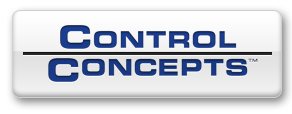SOFT STARTER SERVICE & REPAIR
What Is a Soft Starter?
A soft starter, sometimes known as a Reduced Voltage Soft Starter (RVSS), is a device that controls the current running to a motor. It is used to gradually increase power during startup, which provides a smoother startup process than a sudden rush of energy.
Traditional starters can sometimes damage or overheat motors. The gradual power-up reduces the stress on the motor, increasing its usable life span. A soft starter uses specially controlled solid-state devices for each phase to slowly increase the initial voltage to the motor.
When Should You Use a Soft Starter?
Soft starters are used with AC motors in applications that need controlled current, torque, or acceleration time. They can also control deceleration if desired. Typical applications include fans, conveyor belts, pumps, and more.
Soft starters conserve energy, increase efficiency, reduce strain on machinery, and save money.
Five reasons to use a soft starter:
-
To limit the inrush current drawn from a utility when a motor first starts - Sudden draws on a current can create a voltage dip that impacts other loads in the system that may be sensitive to low voltage or sudden changes in power levels.
-
To reduce your peak power demand - This will thereby lower your utility bill on large, multi-motor applications.
-
To reduce mechanical system stress - Stress can result in mechanical shock due to high torques produced by a high initial current, causing system element failure in motor shafts, belting, drive trains, and gearboxes, or damage to fragile items in production.
-
To eliminate the “water hammer” effect - High initial current to a pump can start or stop the water flow rather like a hammer, rattling the pipes and plumbing or leading to catastrophic failure.
-
To save space and cost when compared to VFDs - Soft starters are less expensive and physically smaller than a VFD. If full speed operation is acceptable, a soft start can give a controlled acceleration and deceleration similar to a VFD.
How Does a Soft Starter Work?
Industrial soft starters use a type of power semiconductors called “Silicon Controlled Rectifiers” (SCRs) along with the logic circuitry necessary to regulate them and interface with external controls.
When you press the Start button on a piece of machinery, the soft starter issues an “On” command to the power module.
The SCRs become active and gradually increase the voltage across the motor terminals. When the flow reaches full voltage, a bypass (RUN) contactor closes, and the SCRs stop conducting current.
Mechanical soft starters exist as well. They use clutches and different couplings with fluids, steel shot, or magnetic forces to reduce torque to the motor.
Soft Starter Applications
A variety of machines and applications use soft starters.
- Pumps
- Conveyor belts
- Fans and similar machinery
Soft Starter vs. VFD
A Variable Frequency Drive (VFD) is similar to a soft starter, but they have critical differences.
A VFD controls the speed of an AC induction motor. It’s a motor control device that regulates the amount of power running through the motor as it starts up. Like a soft starter, a VFD helps prevent power surges and startup issues.
VFDs can regulate the speed of the motor at startup and during operation and power-down. A soft starter controls acceleration and deceleration but runs the motor at full speed.
Commonly Asked Questions about Soft Starters
Should I use a soft starter or a VFD?
Use a soft starter when you need to run the motor at full speed but want a controlled ramp during acceleration and deceleration. If you need to control the speed continuously, use a VFD.
How do I size a soft starter?
The industry recommends sizing the soft starter by the motor full load amps (FLA) current instead of the power rating. The current inrush of a large motor can be as much as ten times the full load amps. However, soft starters are typically sized to accommodate three or four times that amount.
How do soft starts commonly fail?
Common reasons for a soft starter failure include:
- Short circuits or arcs in the motor or motor wiring
- Voltage spikes from the power line
- High temperatures in the soft start due to poor ventilation or the installation environment
What brands do you service?
Click here to see a list of brands we service. Don't see your brand on the list? Give us a call.
If you have questions about your soft starters or need service or repair, Control Concepts can help you 24/7.
Contact us today.



































